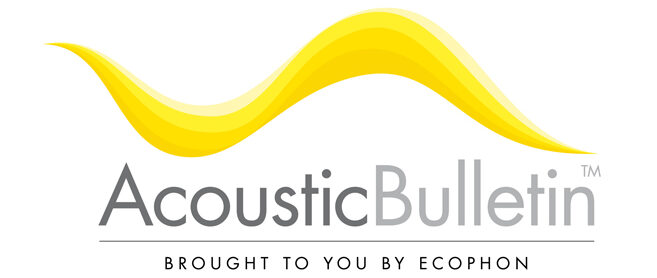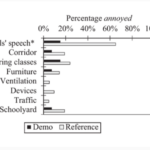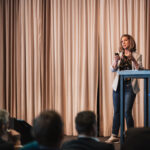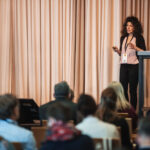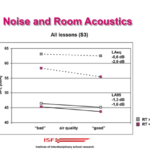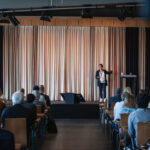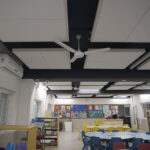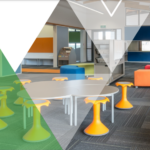According to the study, additional sound absorbing materials – e.g. acoustic panels, carpets and soft furniture – play a significant role in creating calm and pleasant learning environments. In a study published in 2023 by Turku University of Applied Sciences. It was found that the noise generated in the school environment from the activities of the […]
classroom acoustics
Acoustic Design for Special Educational Needs (SEN) in Mainstream Schools
Acoustic Design for Special Educational Needs (SEN) in Mainstream Schools presented by Emma Greenland at EIAS2023. A review of the evidence base regarding acoustic design and special educational needs was undertaken. To answer the following questions on behalf of the Department for Education in England: What are the differing listening needs for students with different […]
Background noise in classrooms: How it affects performance (EIAS 2023)
EIAS 2023: Chiara Visentin, senior researcher at Eurah Research in Italy, held an interesting presentation at the recent EIAS2023. It was about the topic of background noise in classrooms, and how this affects the pupils’ task performance. Even though a classroom meets the minimum acoustic requirements, there is no guarantee that the room is an […]
Acoustics and Air Quality – The Impact on Student Concentration and Fatigue
At EIAS 2023, findings from the former ISF (institute for interdisciplinary school research) and Gerhart Tiesler were presented by Rainer Machner. The research was initiated in 2005 by public discussion of air quality in offices and schools. One pattern for the research we found in “Handbuch der Schulhygiene” (handbook of hygiene in schools), 2nd edition […]
Optimal reverberation time in classrooms (Italian schools)
Arianna Astolfi Associate Professor at Politecnico di Torino, Department of Energy Torino, Italy has worked with acoustics since 2000. Optimal reverberation time in classrooms in Italian schools is her latest initiative. The study background and scope Arianna shared her thoughts and findings from a large study of Italian classrooms. This was specifically motivated to see […]
The effect of sound absorbers and diffusers in ordinary public rooms
Introduction Emma Arvidsson, Researcher and PhD ”Acoustic Design with Regard to Human Perception” presented her recent Phd study at EIAS2023. She focused on the objective and subjective aspects of acoustic design in ordinary rooms. Aiming to optimize room acoustics and examining the effects of different sound absorbers and diffusers. ‘Acoustic design plays a crucial role […]
Major acoustic upgrade at Seth MR Jaipuriya school in Lucknow, India
Seth MR Jaipuriya school in Lucknow, India, recently underwent a major upgrade with Team 3 Architects in New Delhi, bringing the school confidently into the 21st Century. Luckily, the acoustics were not forgotten and were, in fact, a main concern for the Principal, Promini Chopra, who speaks in the video below. “After 25-26 years, we […]
Improving acoustic conditions at Mount Abu School in Delhi, India
Mount Abu School in Delhi, India, prides itself in providing the most advanced and optimized learning environments for its learners. That’s why the school offers an impressive array of technology for students like 3D printers and robotics, and also houses a STEM excellence center. But the acoustic conditions left a lot to be desired. After […]
Designing quality learning spaces in over 600 schools in New Zealand
As part of their School Property Strategy, New Zealand’s Ministry of Education (MoE) has recently revamped their acoustic standard for education, Designing Quality Learning Spaces (DQLS), and aims to implement it across 3,000 learning spaces in over 600 schools. The initiatives were recently presented at the Internoise 2022 conference by James Whitlock from Marshall Day […]
New research shows that a lower reverberation time helps children cope with multi-talker listening situations
How children make sense of the complex signals they hear in the classroom depends partly on their hearing and cognitive abilities. But newly published research shows more about the important part played by the acoustic environment in this process; specifically, the role of reverberation time. The ability to make sense of what you are hearing […]
